The Power to Draw Better
post by Liron · 2019-11-18T03:06:02.832Z · LW · GW · 7 commentsContents
This is Part X of the Specificity Sequence None 7 comments
This is Part X of the Specificity Sequence [LW · GW]
Cats notoriously get stuck in trees because their claws are better at climbing up than down. Throughout this sequence, we’ve seen how humans are similar: We get stuck in high-level abstractions because our brains struggle to unpack them into specifics. Our brains are better at climbing up (concrete→abstract) than down (abstract→concrete).
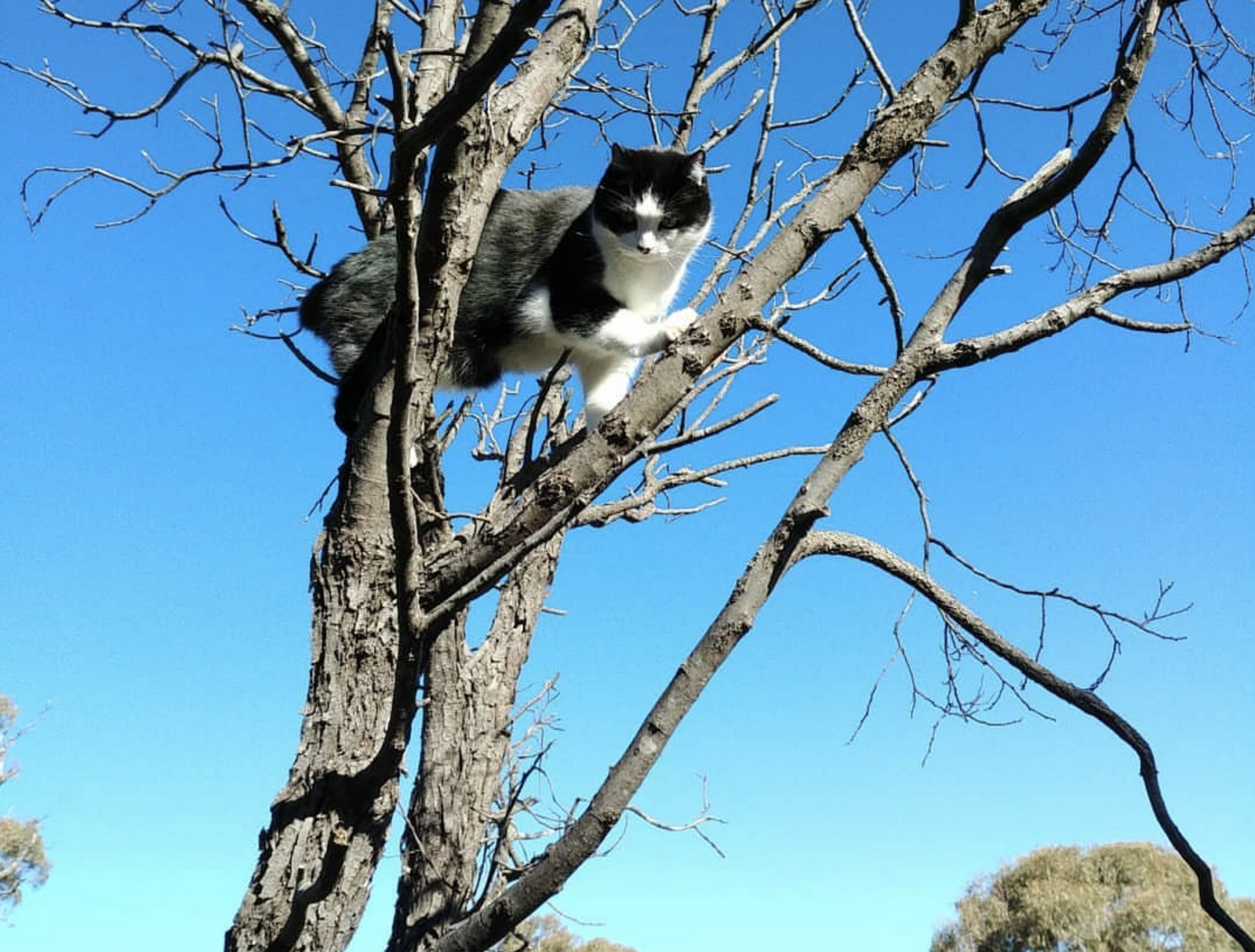
If you’ve ever struggled to draw a decent picture, you know what being stuck at a high level of abstraction feels like in the domain of visual processing. I know I do. My drawing skills are nonexistent. I can draw kindergarten-quality stick figures, but I don’t even know where to begin drawing something that looks the least bit realistic.
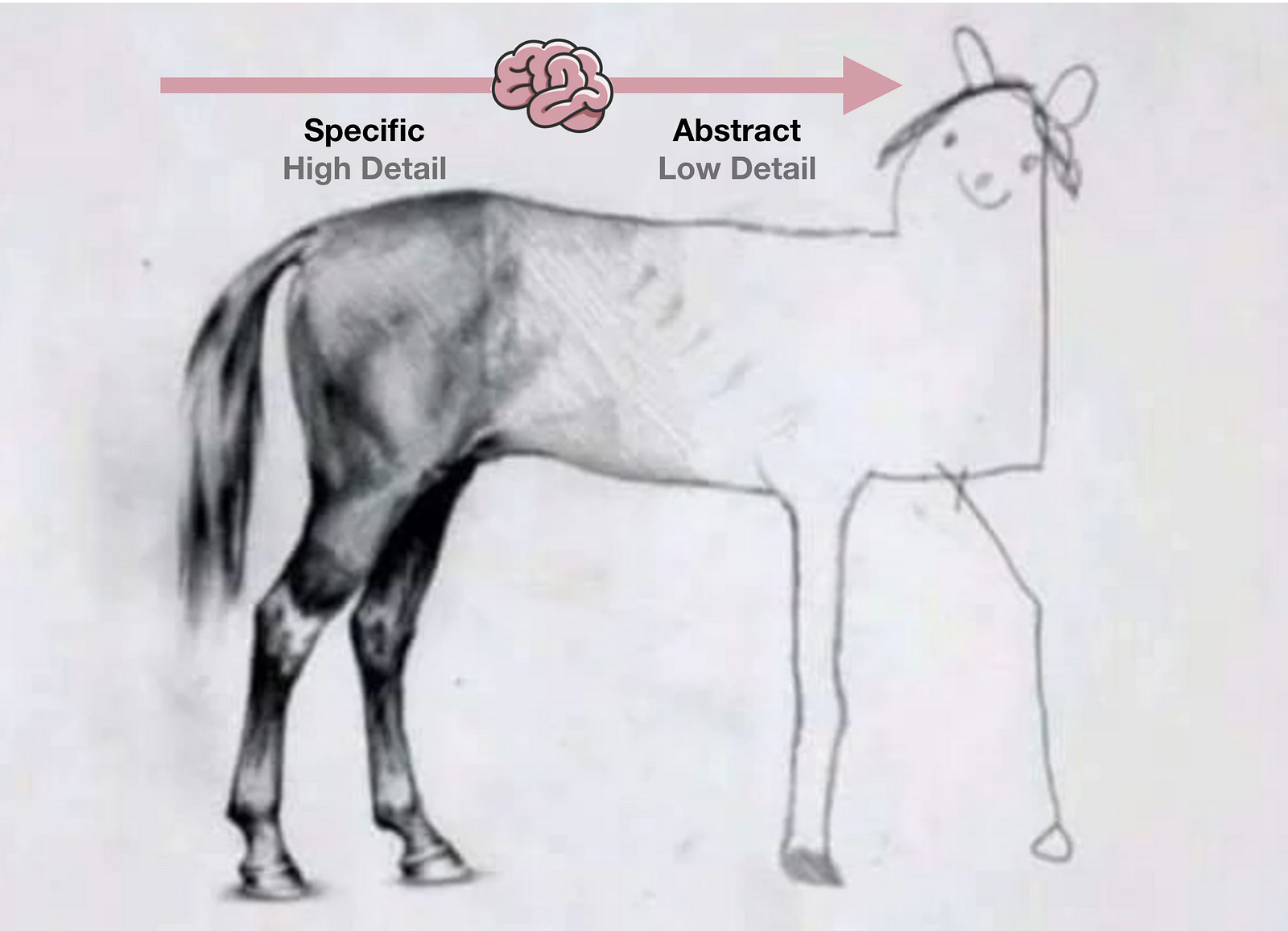
Despite how pathetic a stick figure looks, it’s worth marveling at our brain’s formidable power to distill a mess of light and dark stimuli into a few geometric parts.

A stick figure is a mental representation of an animal which is great for practical tasks like throwing a spear at it.
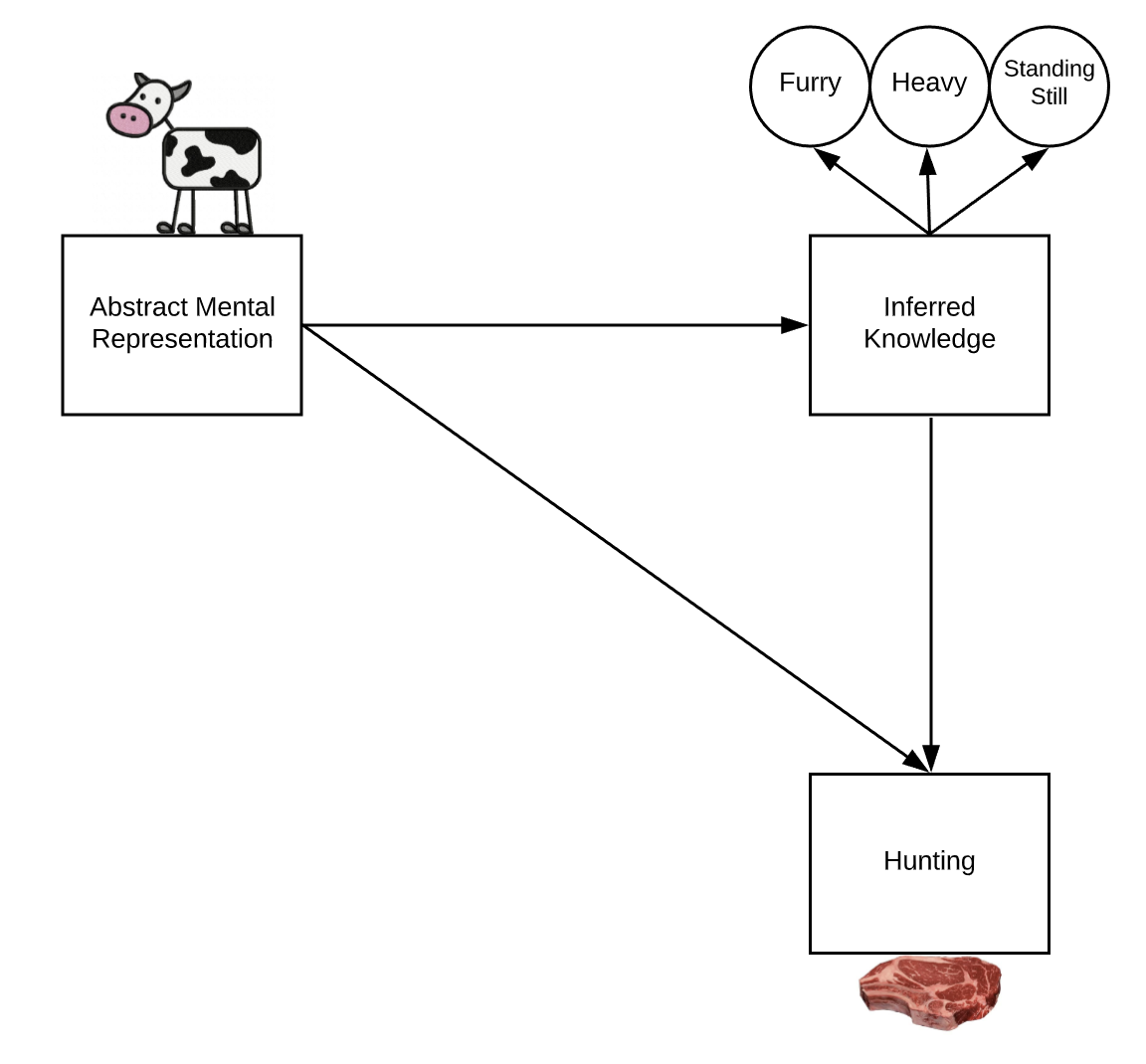
The question is just, why can people like me only draw a pathetic stick figure even when we’re trying to draw a nice picture?
The visual system was only under selective pressure to evolve a processing pathway from sensing visual features to building an abstract representation of those features, not a processing pathway to transform a high-level mental representation into a low-level pencil strokes representation. I draw stick figures because my conscious mind thinks in stick figures.
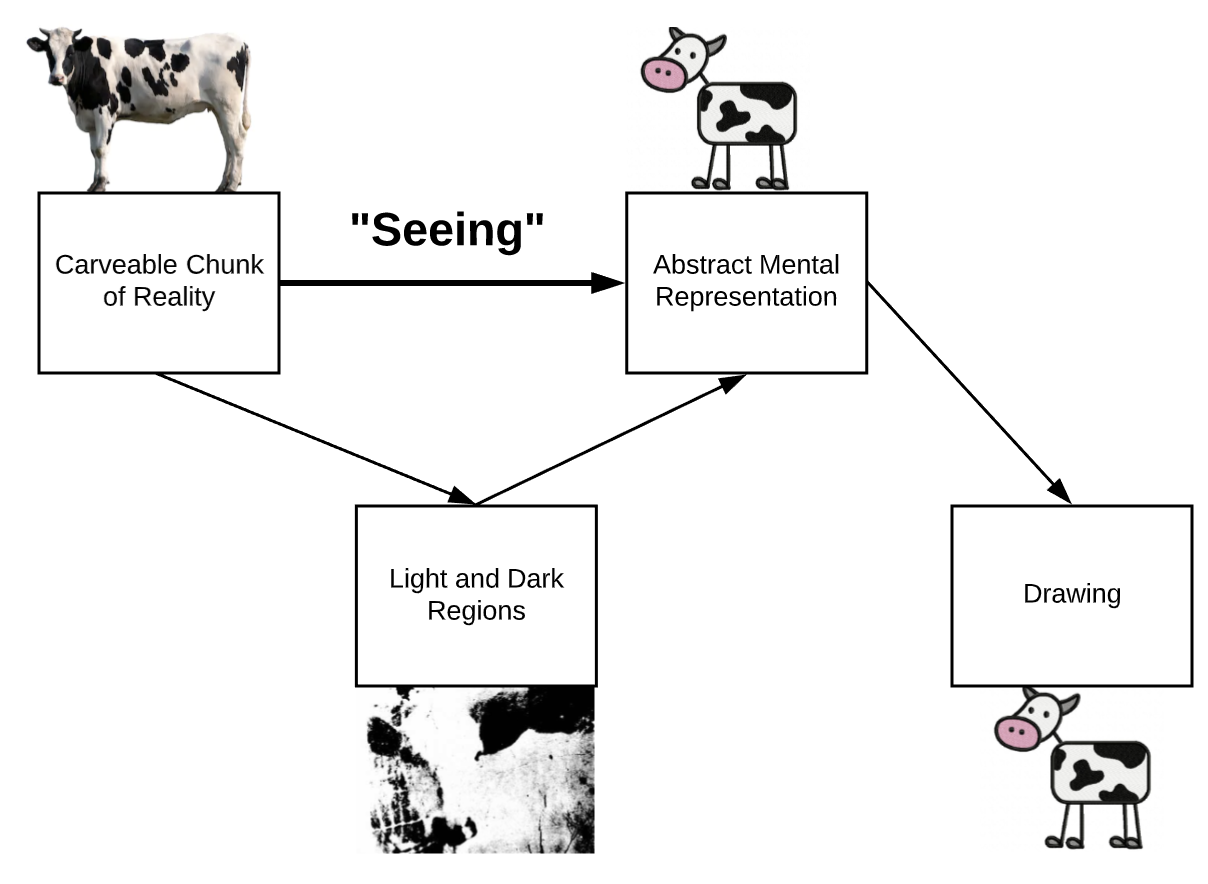
But we know that the unconscious part of our visual brains isn’t one-way. When we first recognize that we’re seeing a cow, our brain propagates visual information from abstract mental representations down toward lower-level visual feature recognition.
Consider this image:

Most people have trouble identifying what they’re seeing in different parts of the image, until they realize it’s a cow, and then all the parts snap into focus. Their interpretation of low-level features of the image, e.g. that the white dots within the black foreground region on the leftmost part of the image are “furry”, is influenced top-down by their abstract mental representation of a cow.
How do skilled artists navigate down the ladder of visual abstraction consciously?
In Drawing on the Right Side of the Brain, Betty Edwards teaches students to accurately sketch the scene coming into their eyes through a clever upside-down drawing technique. The technique bypasses the part of the brain that would normally abstract visual input:
When presented with an upside-down image as a subject to be drawn, the left-hemisphere’s verbal system [the abstracting mechanism] says, in effect, “I don’t do upside down. It’s too hard to name the parts, and things are hardly ever upside-down in the world. It’s not useful, and if you are going to do that, I’m out of here.” The dominant verbal system “bows out,” and the sub-dominant visual mode is “allowed” to take on the task for which it is well suited.
Upside-down drawing helps draw the brain’s attention to what Edwards calls the “component skills of drawing”. These include edges, negative spaces, proportions, lights and shadows. For example, your brain’s high-level abstract representation might tell you that the boundary of an object is horizontal, but a lower-level examination of what your eye is seeing will contradict that, leading you to represent the boundary by drawing a slanted line on the page.
“Drawing on the right side of the brain” means drawing using mid-level representations of visual inputs, rather than the fully abstract ones we rely on for other activities.
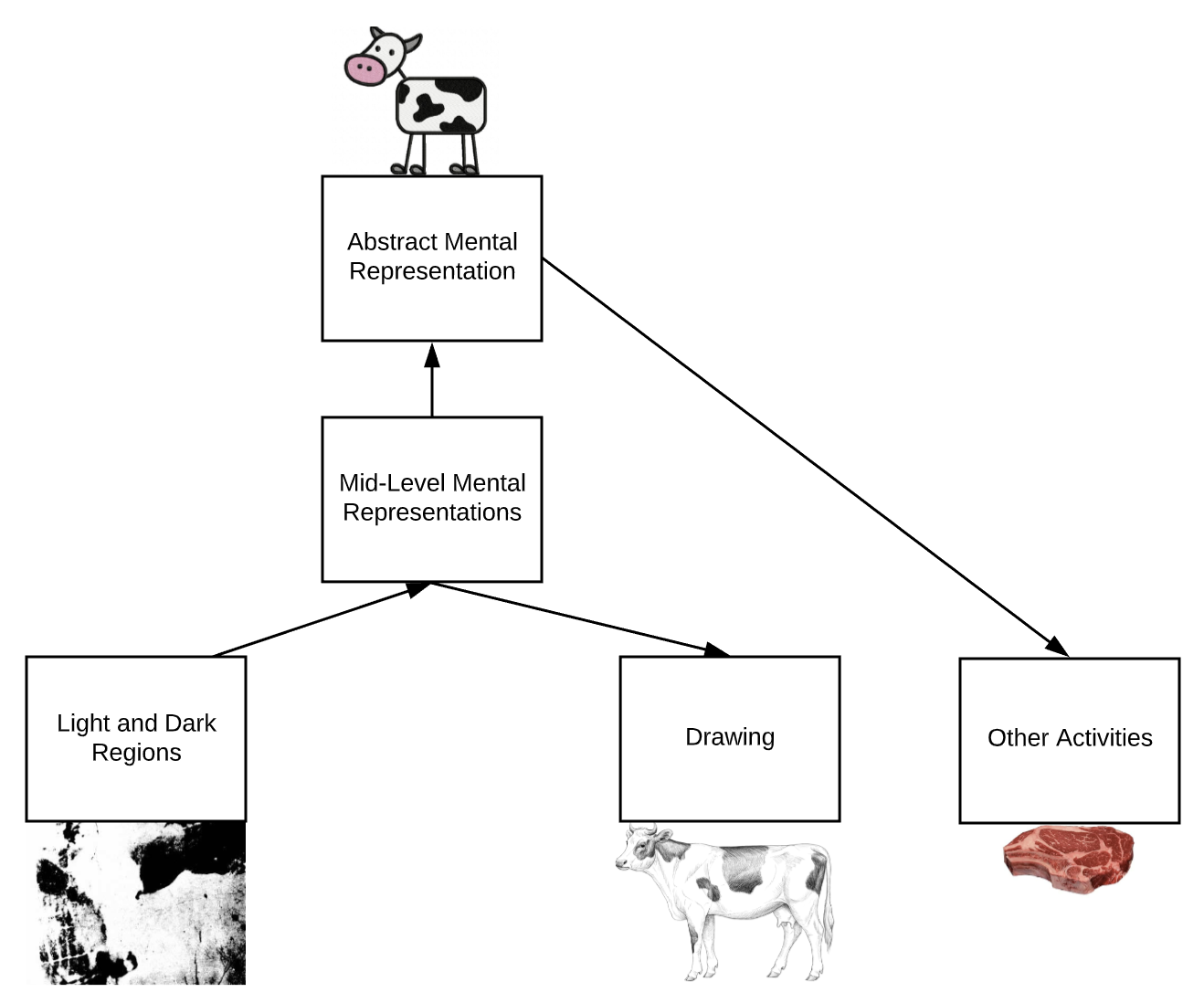
Edwards has an online gallery of her students’ self-portraits before and after taking her class. This one stopped me in my tracks:
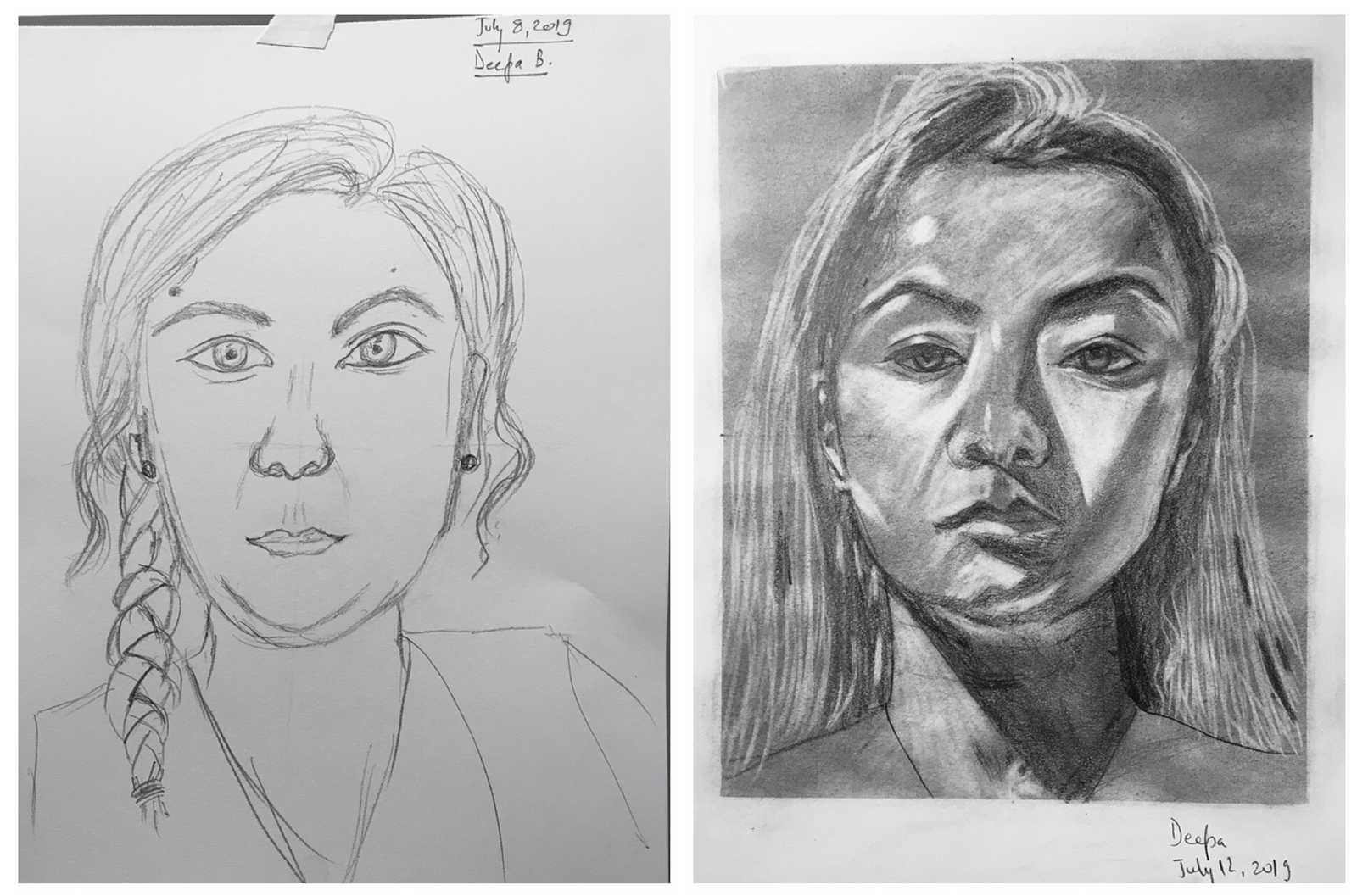
Staring at the “after” drawing feels like I’m witnessing the first time the artist finally saw her own face, and wanted to communicate the joy and beauty of what she saw by accentuating it for the rest of us. I’ve bought a copy of Edwards’s book because I hope to try out her techniques and rewire my brain to experience my own visual revelation.
It’s clearly possible to draw detailed realistic pictures. Great artists can do it. A $5 camera can do it. The interesting takeaway for our purposes is that drawing realistic pictures means developing the skill of moving in the abstract→concrete direction, against the grain of normal conscious thought.
Next post: The Power to Be Creative (coming soonish)
7 comments
Comments sorted by top scores.
comment by cousin_it · 2019-11-18T08:50:35.612Z · LW(p) · GW(p)
Betty Edwards' book is a fun way to get into drawing, but "drawing what you see" only takes you so far. For example, the visible outline of a human figure is infinitely changing: if you learn how it looks for one pose and viewing angle, it won't help you at all with drawing a slightly different pose or angle. Yet there are many people in the world who can draw a realistic human, in any pose and viewing angle, without reference. That skill doesn't magically emerge from many hours of drawing what you see, it needs to be learned on its own terms - "drawing what you know" or "constructive drawing". I think that method might even be easier for LW folks, because it's more systematic and analytical.
Here's the difference between the two methods: imagine two artists are asked to draw a vase. Betty, a proponent of drawing what she sees, starts by sketching the outline of the vase, paying attention to the beautiful curves of negative space around the handles. Then she gradually fills it in. Meanwhile Connie, a proponent of constructive drawing, starts with the scaffolding instead. A straight line for the axis; an ellipse for the rim, whose center and minor axis lie exactly on the axis; another ellipse for the bottom; some more elliptical cross-sections. A vertical plane passing through the axis, to make sure the handles are symmetrical. Now drawing the actual vase is easy, and unlike Betty's, it will look solid and right.
The same method works for more complex shapes, with different kinds of scaffolding for each. Where Betty draws an outline of a human head, Connie starts with a sphere and a plane of symmetry. Where Betty draws an outline of a car, Connie starts with a perspective-correct transparent box around the car, then draws inward. Where Betty draws a cat starting from a fuzzy blob, Connie starts with a posed skeleton and draws outward. It doesn't give as fast gratification as Betty's method, but the skill builds on itself: once you know the rough 3D shape of a human skull, it becomes a foundation for learning more detail. Everything stays relevant for future drawings from different angles, and nothing gets forgotten.
Replies from: None↑ comment by [deleted] · 2019-11-18T15:10:05.843Z · LW(p) · GW(p)
Any resources you'd recommend that describe the constructive style further? I've read Drawing on the Right Side of the Brain and so would be curious to read about this other approach more.
Replies from: cousin_it, nico-coronado↑ comment by Nico Coronado (nico-coronado) · 2019-11-22T21:31:15.104Z · LW(p) · GW(p)
Rapid Viz by Kurt Hanks and How to Draw by Scott Robertson are excellent primers.
comment by Charlie Steiner · 2019-11-18T10:40:45.868Z · LW(p) · GW(p)
Any sequence that involves recommending people work through Drawing on the Right Side of the Brain is a sequence I should read :P
comment by pmetzger · 2019-11-18T22:58:07.659Z · LW(p) · GW(p)
I've taken the Edwards class; I can testify that the results were more or less as dramatic as what you see above. (One reason I took the class was that I thought that I was somehow mentally deficient in that I couldn't draw at all. Once I took the class and realized it was mostly about a very specific learnable skill that I had lacked, my desire to learn how to draw faded. BTW, similar skills are taught in Kimon Nicolaides' "The Natural Way to Draw".)
↑ comment by MikkW (mikkel-wilson) · 2020-10-11T21:56:49.102Z · LW(p) · GW(p)
From my personal experience, there is no way to improve your art through imagination
I have found that statements of the form "from my experience, it is impossible to [do something that I tried]" tend to be incorrect, since there are far more avenues to do something in a certain way than a single person can try in a lifetime